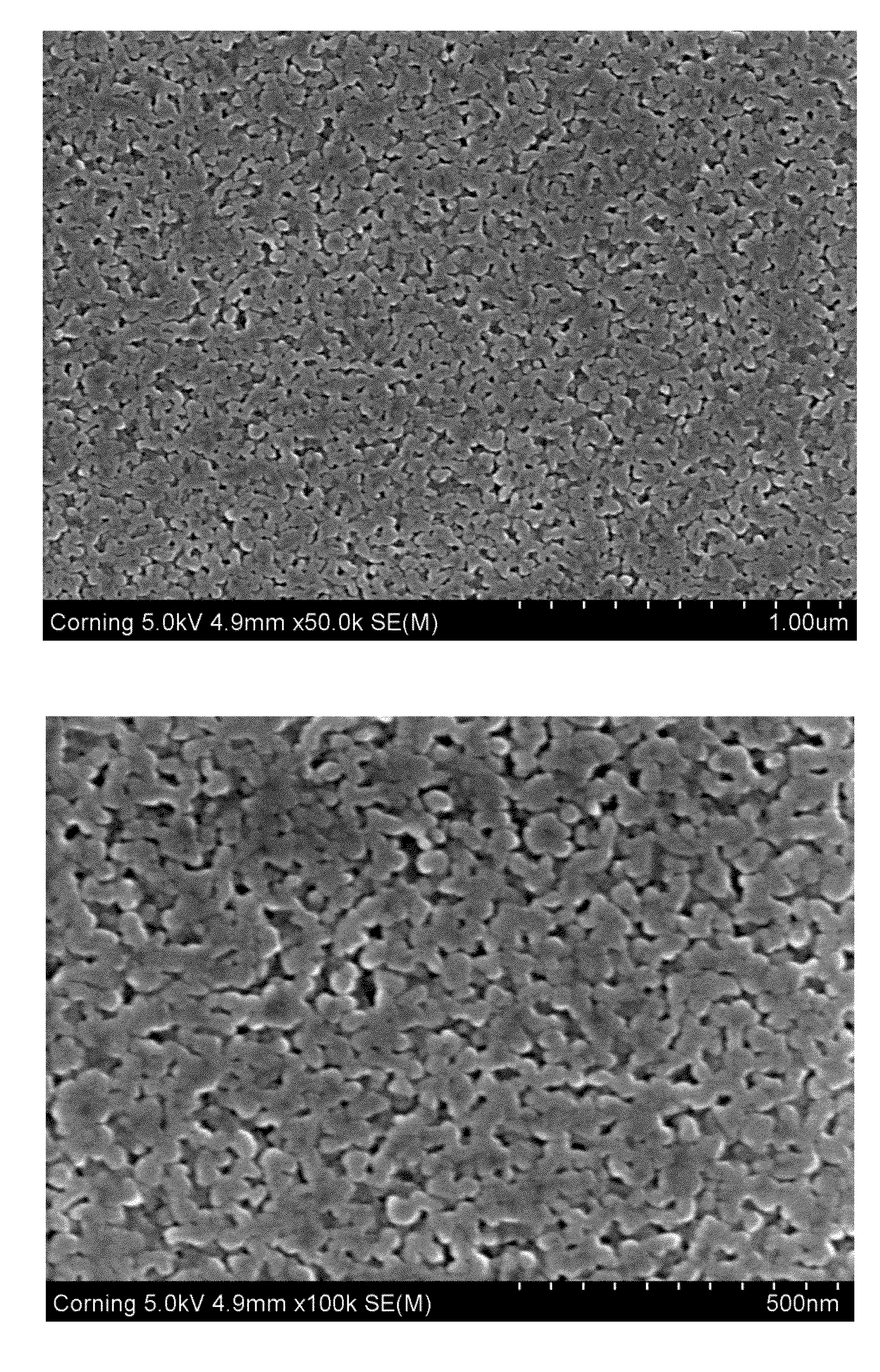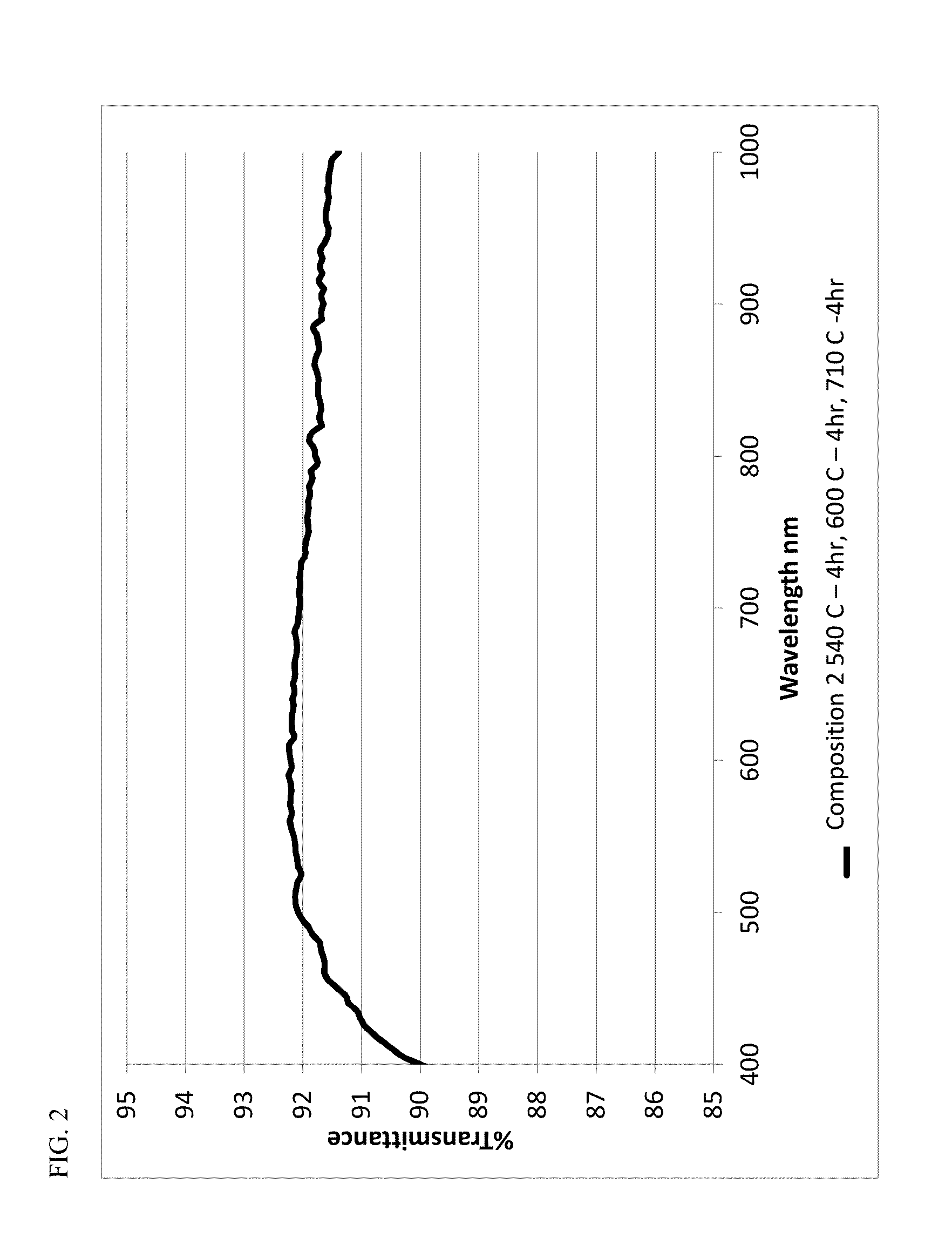High strength glass-ceramics having petalite and lithium silicate structures
a technology of lithium silicate and glass-ceramics, which is applied in the field of glass and glass ceramic compositions, can solve the problems of low crack penetration resistance, and low intrinsic brittleness of known glass-based materials, and achieve the effect of increasing the weight percentag
- Summary
- Abstract
- Description
- Claims
- Application Information
AI Technical Summary
Benefits of technology
Problems solved by technology
Method used
Image
Examples
example 1
[0195]Example glass and glass ceramic compositions (in terms of wt %) and properties for achieving transparent glass ceramics are set forth in the Table 1 and were determined in accordance with techniques conventional in the glass art. Precursor glasses were formed having the compositions 1-16 listed in Table 1. The precursor glasses were then subjected to a ceramming cycle having a glass homogenization hold at 540° C. for 4 hours, a nucleation hold at 600° C. for 4 hours, and a crystallization hold at a temperature in a range from 630 to 730° C. for 4 hours. The following nomenclature was used in Table 1 to describe the ceramming cycle: glass homogenization temperature—hold time / nucleation temperature—hold time / crystallization temperature—hold time.
[0196]The liquidus temperature is the temperature where the first crystal is observed in a standard gradient boat liquidus measurement (ASTM C829-81 and it progeny). This involves placing crushed glass particles in a platinum boat, placi...
example 2
[0208]Example glass and glass ceramic compositions (in terms of wt %) and properties for achieving translucent glass ceramics are set forth in the Table 2 and were determined in accordance with techniques conventional in the glass art. Precursor glasses were formed having the compositions 17-29 listed in Table 2. The precursor glasses were then subjected to a ceramming cycle indicated in Table 2 below.
TABLE 2Composition17181920212223SiO2 (wt %)78.378.378.378.378.378.376.3Al2O3 (wt %)10.59.39.39.37.58.18.7B2O3 (wt %)10.60.60.60.00.20.4Li2O (wt %)9.510.710.710.712.511.911.3Na2O (wt %)1.71.71.71.71.71.71.7K2O (wt %)0.00.00.00.00.00.00.0ZnO (wt %)0.00.00.00.00.00.00.0ZrO2 (wt %)4.04.06.08.04.04.04.0P2O5 (wt %)3.02.02.02.02.02.22.4Ceramming700° C.-700° C.-700° C.-700° C.-540° C.-540° C.-540° C.-cycle0.5 hr / 0.5 hr / 0.5 hr / 0.5 hr / 4 hr / 4 hr / 4 hr / 800° C.-800° C.-800° C.-800° C.-600° C.-600° C.-600° C.-0.5 hr0.5 hr0.5 hr0.5 hr4 hr / 4 hr / 4 hr / 730° C.-740° C.-730° C.-4 hr4 hr4 hrPhasePetalite,Pet...
PUM
| Property | Measurement | Unit |
|---|---|---|
| wt % | aaaaa | aaaaa |
| wt % | aaaaa | aaaaa |
| wt % | aaaaa | aaaaa |
Abstract
Description
Claims
Application Information
 Login to View More
Login to View More - R&D
- Intellectual Property
- Life Sciences
- Materials
- Tech Scout
- Unparalleled Data Quality
- Higher Quality Content
- 60% Fewer Hallucinations
Browse by: Latest US Patents, China's latest patents, Technical Efficacy Thesaurus, Application Domain, Technology Topic, Popular Technical Reports.
© 2025 PatSnap. All rights reserved.Legal|Privacy policy|Modern Slavery Act Transparency Statement|Sitemap|About US| Contact US: help@patsnap.com



